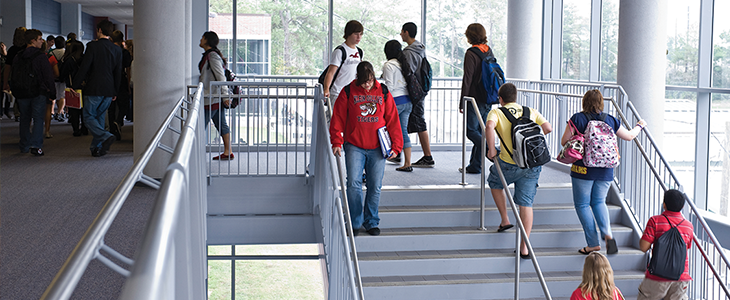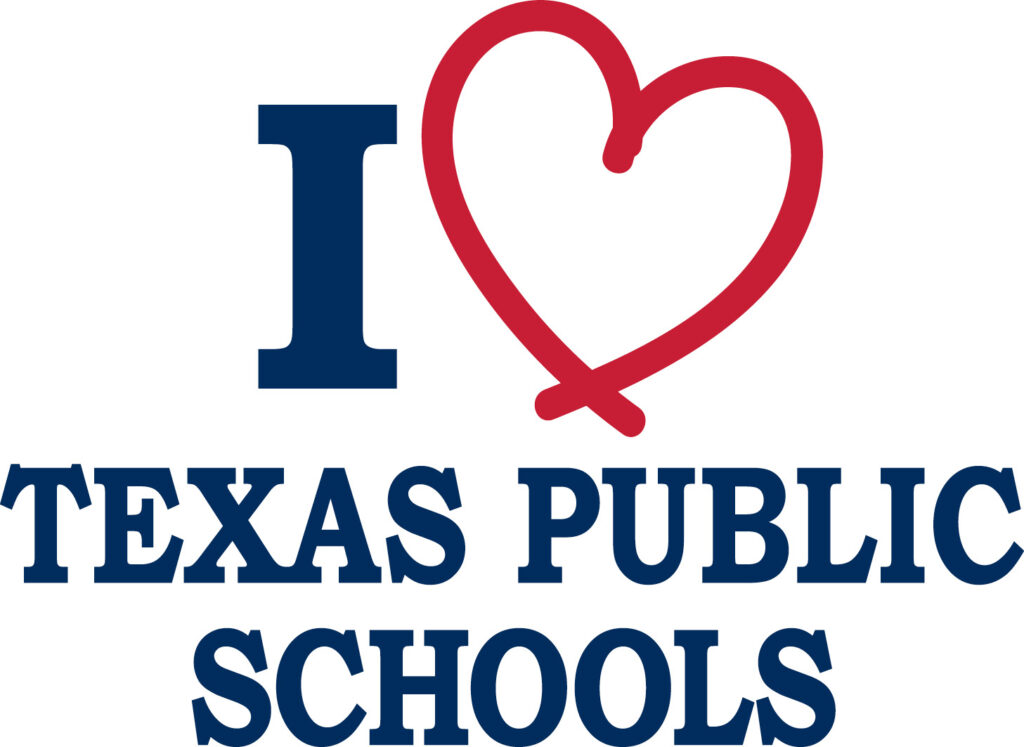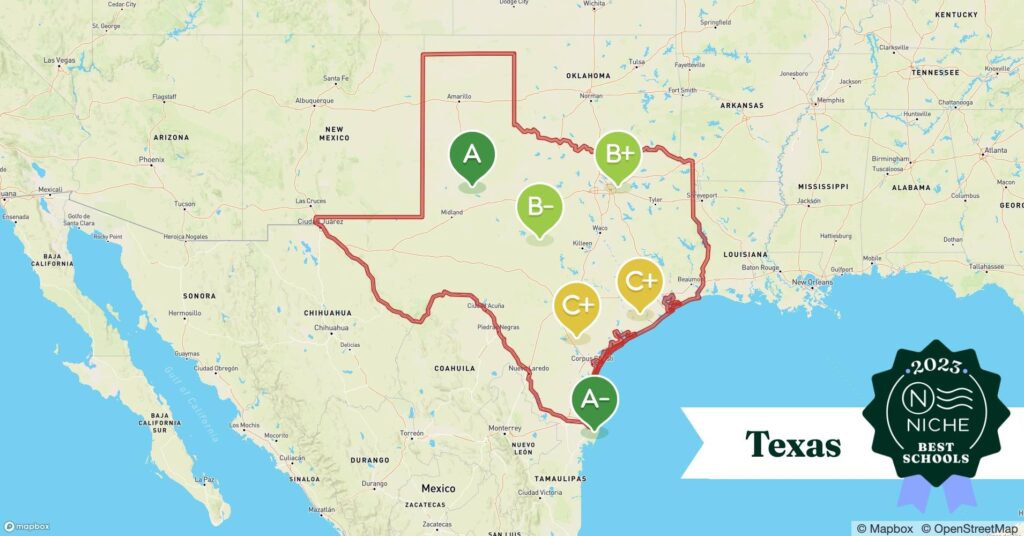Texas, often renowned for its vast landscapes and Southern charm, is not only home to iconic cowboy culture but also boasts a comprehensive public education system. With a focus on providing quality education to its residents, Texas takes pride in its network of public schools spread across the state. These schools, encompassing different grade levels and academic disciplines, play a crucial role in shaping the future of Texas by equipping students with essential knowledge and skills necessary for success. In this article, we will explore the extensive public education system in Texas, shedding light on its key features and how it contributes to the state’s overall educational landscape.

This image is property of tea.texas.gov.
Historical Background
Early Education in Texas
Public education in Texas has a rich and noteworthy history, dating back to the early days of the state. The first public schools were established in the mid-19th century, shortly after Texas gained its independence from Mexico. These early schools were often one-room buildings, serving a small community and providing basic education to children.
Development of Public School System
Over the years, the public school system in Texas grew and evolved. As more settlers arrived in the state, the demand for education increased. In the late 19th century, the Texas legislature passed a series of laws that established a more formal structure for public schools. These laws mandated the creation of school districts, the hiring of certified teachers, and compulsory attendance for children.
Current State of Public Schools
Today, Texas is home to one of the largest public school systems in the United States. With over 5.4 million students enrolled in public schools, the state is dedicated to providing a quality education to all residents. While there are challenges and areas for improvement, Texas continues to invest in its public schools to ensure that every student has access to a high-quality education.
Administration and Governance
Texas Education Agency (TEA)
The Texas Education Agency (TEA) is the state agency responsible for overseeing and implementing public education policies in Texas. It works closely with school districts, educators, and stakeholders to ensure that students receive a quality education in a safe and supportive environment. The TEA is responsible for setting academic standards, managing standardized testing, and providing guidance to school districts.
State Board of Education
The State Board of Education (SBOE) is a group of elected officials responsible for setting education policy and standards in Texas. The board consists of 15 members who serve staggered 4-year terms. Its primary duties include adopting the Texas Essential Knowledge and Skills (TEKS), approving textbooks and instructional materials, and managing the Permanent School Fund.
District Level Administration
At the district level, public schools in Texas are governed by local school boards. These boards are comprised of elected members who represent the interests of the community. School boards are responsible for making policy decisions, approving budgets, hiring superintendents, and ensuring that schools operate effectively. They play a critical role in the administration and governance of public schools.
Funding and Finance
Sources of Funding
Public schools in Texas are primarily funded through a combination of state, local, and federal sources. The bulk of funding comes from the state, which allocates funds based on a formula that takes into account factors such as student enrollment, district size, and student needs. Local funding is derived from property taxes, while federal funding is provided through various programs and grants.
School Finance System
Texas operates under a school finance system that aims to distribute funding equitably among school districts. The system uses a combination of state and local funds to provide resources and support to schools. However, there have been ongoing debates and legal challenges regarding the adequacy and equity of the school finance system, with critics arguing that it fails to adequately meet the needs of all students.
Property Taxes and School Funding
One of the key sources of local funding for public schools in Texas is property taxes. School districts are authorized to levy property taxes to generate revenue for education. However, there have been concerns about the reliance on property taxes, as it can create disparities in funding between wealthy and economically disadvantaged communities. Efforts to reform the school finance system have been ongoing to address these concerns.
School Structure
Grade Levels
Public schools in Texas typically offer education from kindergarten through 12th grade. The grade levels are divided into elementary, middle/junior high, and high schools. Elementary schools usually serve students from kindergarten to 5th or 6th grade, while middle/junior high schools cater to students in grades 6 to 8 or 7 to 9. High schools provide education for students in grades 9 to 12.
School Districts
Texas is home to numerous school districts, each operating independently under the guidance of a local school board. School districts vary in size, with some serving small rural communities and others encompassing large urban areas. These districts are responsible for hiring staff, managing budgets, and ensuring that schools within their jurisdiction adhere to state standards and policies.
Charter Schools
Charter schools offer an alternative to traditional public schools in Texas. These schools operate under a charter, or contract, with a governing body such as a nonprofit organization or university. While charter schools receive public funding, they have more flexibility in their curriculum, teaching methods, and management structure. Charter schools are subject to oversight by the TEA and must meet certain performance standards.
Magnet Schools
Magnet schools are another type of specialized public school in Texas. These schools offer focused programs in specific areas such as STEM (Science, Technology, Engineering, and Mathematics), arts, or vocational training. Magnet schools aim to attract students from different districts by providing unique educational opportunities. Admission to magnet schools is typically based on a competitive application process, and transportation may be provided for students who live outside the school’s attendance zone.

This image is property of thumbor-prod-us-east-1.photo.aws.arc.pub.
Curriculum and Standards
Texas Essential Knowledge and Skills (TEKS)
The Texas Essential Knowledge and Skills (TEKS) is the state curriculum standards that outline what students should know and be able to do in each grade and subject. The TEKS cover a wide range of subjects, including English language arts, mathematics, science, social studies, and more. These standards provide a framework for educators to develop lesson plans and ensure that students receive a well-rounded education.
Standardized Testing
Standardized testing plays a significant role in the Texas public school system. The State of Texas Assessments of Academic Readiness (STAAR) is the primary standardized test used to assess student achievement. Students are tested in various subjects and grade levels to measure their knowledge and skills. These assessments help identify areas of strength and weakness and inform instructional decisions and accountability measures.
Curriculum Development
Curriculum development in Texas involves a collaborative process that includes input from educators, experts, and the community. The TEA provides guidance and resources to support districts in developing curricula that align with the TEKS. Districts have the flexibility to adapt the curriculum to meet the specific needs of their students while ensuring alignment with state standards.
Student Demographics
Enrollment Statistics
Texas has a diverse student population, with a wide range of ethnic and cultural backgrounds represented. As of the most recent data available, the total enrollment in Texas public schools is over 5.4 million students. The state continues to experience population growth, leading to an increase in student enrollment and the need for additional resources and infrastructure to accommodate the growing number of students.
Diversity and Inclusion
Texas public schools serve students from various racial, ethnic, and socio-economic backgrounds. Efforts have been made to promote diversity and inclusion in schools, including providing resources and support for English language learners and students with disabilities. Schools strive to create inclusive environments that celebrate diversity and foster understanding and acceptance among students.
Special Education
Special education services are provided to students with disabilities in Texas public schools. These services aim to address the unique learning needs of students with disabilities and ensure that they receive a quality education. Special education programs and supports may include individualized education plans (IEPs), specialized instruction, assistive technology, and other accommodations to meet students’ specific needs.
English Language Learners
Texas has a significant population of English language learners (ELLs), students who are learning English as their second language. Public schools in Texas are required to provide appropriate support and services to ELLs to help them develop English language proficiency and succeed academically. This may include specialized instruction, bilingual education programs, and other resources to support language acquisition and academic achievement.

This image is property of compote.slate.com.
Teacher Qualifications and Employment
Certification Requirements
To become a teacher in Texas, individuals must meet specific certification requirements set by the Texas Education Agency. These requirements include obtaining a bachelor’s degree, completing an approved educator preparation program, and passing relevant certification exams. Teachers must also undergo a background check and meet certain training and professional development requirements to maintain their certification.
Salary and Benefits
Teacher salaries in Texas vary depending on factors such as experience, education level, and district size. While Texas teacher salaries are generally competitive compared to national averages, there have been ongoing discussions about the need to increase compensation to attract and retain high-quality educators. In addition to salary, teachers may receive benefits such as health insurance, retirement plans, and professional development opportunities.
Teacher Shortages and Retention
Like many states, Texas has experienced teacher shortages in certain subject areas and regions. Various factors contribute to teacher shortages, including low salaries, challenging working conditions, and limited professional growth opportunities. Efforts have been made to address these issues and improve teacher recruitment and retention, such as offering incentives for teachers in high-need areas and providing additional support and resources for new teachers.
School Safety and Security
Security Measures
Ensuring the safety and security of students and staff is a top priority for Texas public schools. Schools implement various security measures to create a secure learning environment, including controlled access to buildings, security cameras, and emergency communication systems. Additionally, schools may have trained staff or resource officers on campus to respond to safety concerns and emergencies.
Emergency Preparedness
Texas schools have well-established emergency preparedness plans in place to address a range of potential threats, including natural disasters, fires, and intruders. These plans outline procedures for evacuations, lockdowns, and other emergency responses. Regular drills and training sessions are conducted to familiarize students and staff with these protocols and ensure readiness in case of an emergency.
Bullying Prevention
Bullying prevention efforts are an integral part of promoting a safe and positive school environment in Texas. Schools implement policies and programs to address bullying and provide support to students who may be affected. These initiatives may include awareness campaigns, counseling services, and strategies to promote respectful and inclusive behavior among students.

This image is property of www.tasb.org.
Challenges and Controversies
Education Funding Crisis
One of the key challenges facing Texas public schools is the ongoing debate about education funding. Advocates argue that the current funding system is inadequate to meet the needs of all students, particularly those in low-income communities. The state has faced legal challenges regarding the equity of funding and the distribution of resources. Efforts to address the funding crisis and ensure fair and equitable funding for all students are ongoing.
Achievement Gaps
Achievement gaps persist in Texas public schools, with disparities in academic performance among different student groups. Factors such as socio-economic status, race, and English language proficiency can contribute to these gaps. Efforts have been made to address these disparities through targeted interventions, resources, and support services to ensure that all students have equal opportunities to succeed academically.
School Choice Debate
The school choice debate has been a topic of controversy in Texas and across the country. Proponents argue that school choice provides families with more options and promotes competition, ultimately leading to improved outcomes. Critics, on the other hand, raise concerns about the potential negative impact on public schools and the potential for increased segregation. The debate over school choice policies continues, and their implementation and impact on Texas public schools remain topics of discussion.
Sex Education Policies
Sex education policies in Texas have been a subject of controversy and debate. The state requires that abstinence be taught as the preferred method of contraception in sex education classes. Critics argue that this approach may not provide students with comprehensive information about sexual health and reproduction. The controversy surrounding sex education policies highlights the challenges of balancing varying perspectives and educational approaches in public schools.
Evolution and Creationism in Curriculum
The inclusion of evolution and creationism in the curriculum is another area of contention in Texas public schools. The state has faced debates over how to approach the teaching of these topics in science classrooms. Supporters of teaching evolution argue that it is a fundamental scientific theory that should be taught without bias, while proponents of including creationism argue for the consideration of alternative viewpoints. The conversation around the teaching of evolution and creationism continues to spark discussion and controversy.
Community Involvement and Parental Engagement
Parent-Teacher Associations (PTAs)
Parent-Teacher Associations (PTAs) play a crucial role in supporting Texas public schools. PTAs are organized at the school level and provide opportunities for parents, teachers, and community members to collaborate and engage in various activities and events. PTAs support fundraising efforts, volunteer programs, and advocacy for the well-being and success of students.
Volunteer Programs
Volunteer programs provide an avenue for community members to contribute their time and skills to support Texas public schools. Volunteers can assist in classrooms, mentor students, provide tutoring, or contribute to extracurricular activities. These programs strengthen the connection between schools and their communities and provide additional resources and support for students.
Community Outreach
Community outreach efforts aim to engage and involve the wider community in supporting Texas public schools. Schools may organize events, workshops, or educational initiatives that foster collaboration between schools, families, and community organizations. By actively involving the community in education, schools can create a more inclusive and supportive environment for students.
In conclusion, Texas has a robust public school system that strives to provide a quality education to all students. The state’s public schools have a strong historical background and significant administrative governance structures in place. Funding and finance remain key considerations, with efforts ongoing to address challenges such as the education funding crisis and achievement gaps. Texas public schools also face various controversies and debates, including those related to school choice, sex education policies, and the teaching of evolution and creationism. However, community involvement and parental engagement play an essential role in supporting Texas public schools and ensuring the success of each student.

This image is property of d33a4decm84gsn.cloudfront.net.
